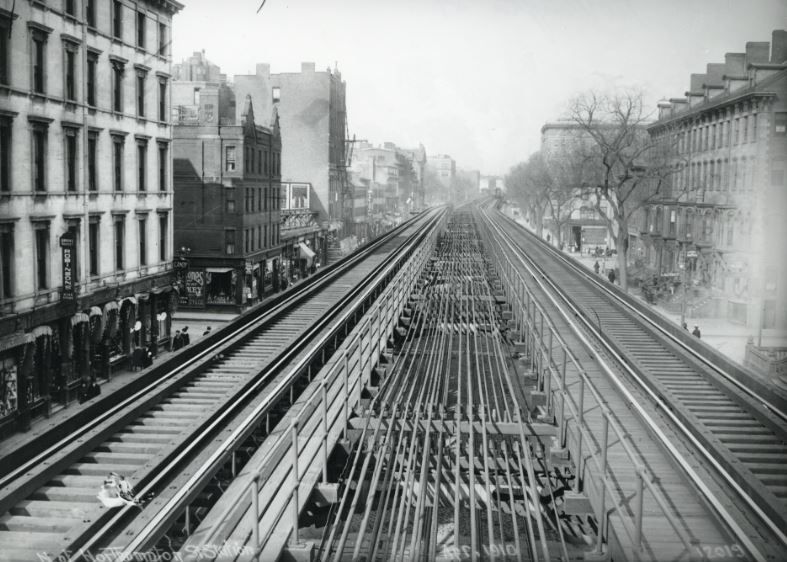Boston Elevated Railway, 1910. Overview of Rows of CD 269 Jumbo Insulators.
By Joe Maurath, Jr.; posted August 11, 2020
View Original: Click to zoom, then click to magnify (787 x 562) 100KB

|
I might have posted this one before and even if I did, this image is among my all-time favorites and I think the same feeling could be true for lots of you viewers. Once in a very great while I will post the same picture again intentionally...and that is either because I got hold of a better copy of it and/or have been able to include some additional documentation. The original post is never deleted. I like to keep my captions updated and when I get some additional background of interest from you readers, I add it to the original post. Very much like I did with my "Follow Up" section in "Insulator ByLines" in Old Bottle Magazine when I was their monthly insulator editor between 1974-1981. I am reliving a lot of those days' fun doing my photos here on ICON and I very much appreciate hearing from those who have written with words of support and with additional data so I can share it with everyone else. Anyway...this photo was taken looking inbound on the Boston Elevated Railway, the same line that harvested the CD 267.5 and many CD 267 insulators. When this line met up with Washington Street the feeder cables split up and went in different directions in providing service to transit car routes around the city. On the other side of Washington Street (station) several feeder cables kept on going. These served the "Orange Line" section of the elevated and that is where the CD 267 and CD 267.5s were used. In other words that stretch was behind the photographer... This section of elevated stood until 1987-1988 when the Orange Line was demolished. Before it was decommissioned I did some looking around and not many of the cross-timbers that held thousands of CD 269s remained. Those that did were very weathered with pins that looked like tall molten points of wood. There were no insulators noted along that run. Originally the heavy cables originated from a generation source way in the background or nearby. A transit employee employee told me that these cables were nearly 1.5 to 1.75 inches in diameter (stranded copper) closest to the outgoing power source (somewhere near the active non-visible tunnel at the way, far end of this picture) and the feeders became gradually a little smaller in size as they extended outbound. Commencing in the 1930s with the popularity of the automobile and buses for city transportation, trolley routes around the city were taken out of service along with all of the insulators, cables, etc., that powered them. The heavy copper wire was salvaged as well as the iron and steel. However the insulators were worthless at the time and ended up in Boston and vicinity landfills. This decomissioning was a slow but sure process. A 1948 photo shows about eight CD 269 Jumbos in service up above the street on this line. At least four lines were for the elevated section on the other side of Washington Street that had the CD 267s and CD 267s. Once these feeders split and went on different courses to supply other routes it is interesting to note that CD 140 insulators were used along street route poles. Why not CD 269s? I do not know. One would normally think those would handle the heavier cables a lot better! I do know first-hand from a retired transit authority electrician that the tie wires that held their conductors to the sides of CD 140s was solid copper and nearly 3/8-of-an-inch thick! Often they were tied very tightly (with a tool?). See one of my recent previous photos whereby there are two pair of CD 140s in service together and look at the very snug ties. These could have led to undetected breakage around their wire grooves owing to metal expansion/contraction due to weather and vibration. In later years composition insulators resembling bakelite manufactured by the J.M. Anderson Co. of Boston were utilized. Again these were side-tie. Many of these standard-pin examples can still be seen on Boston's trolley routes along with gray cabletop power insulators. A closeup view of one of these double-decker cross-timers with their CD 269s follows. Click "Next". |